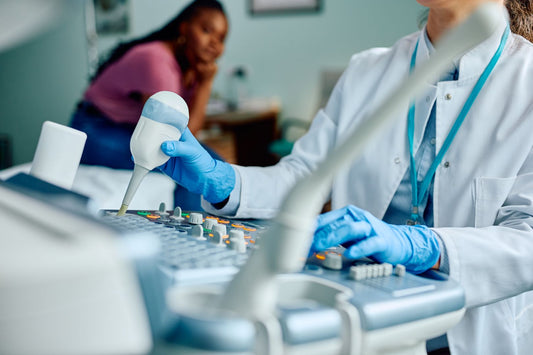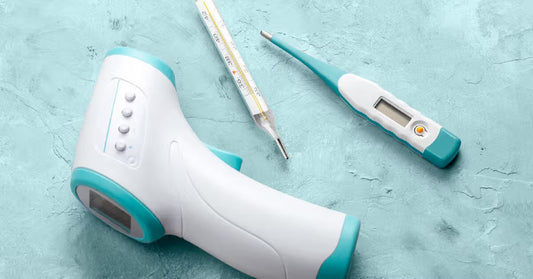
6 Essentials of Diagnostic Equipment in Modern Healthcare
With fast changes in the medical field these days, fast, accurate, and reliable medical evaluation is guaranteed through proper diagnostic tools. Access to proper diagnostic tools is of prime importance not only in clinics, but also in hospitals, and even at home, given that Canada, with its health care system, is renowned for being accessible and of good quality. Physicians, nurses, and paramedics of all shades of the health profession rely on these indispensable tools to efficiently evaluate and monitor the health of patients.
This article will look at six of the most critical diagnostic equipment needed in modern Canadian health care. Some of the important devices covered include AED, stethoscopes, thermometers, blood pressure monitors, and ultrasounds. We discuss its usage, importance, and the reasons why it must remain integral to the modern healthcare system.
1. Blood Pressure Monitors: Tracking Cardiovascular Health
One of the most important diagnostic tools used in any healthcare facility is the blood pressure monitor. Cardiovascular illnesses are at the very top of the list of causes of death in Canada, and they have been number one for years. Since high blood pressure, also referred to as hypertension, is extremely dangerous because it threatens such diseases as kidney disease, heart attacks, and strokes, its monitoring comes with utmost importance.
Types of Blood Pressure Monitors:
- Manual Sphygmomanometers: These are used commonly in the clinical field by health workers to measure the rate at which arterial blood flows through a stethoscope.
- Digital Blood Pressure Monitors: For home use, digital monitors have gained popularity. They come in automatic and semi-automatic types. They are simple, quick to use, and yield quick results.
Why It’s Essential in Canada: To the Canadian people, blood pressure monitors are essential in hospitals and at home. Home-based health care enables patients with chronic diseases to get digital monitors, where they can learn to monitor blood pressure by themselves. This enables them to take care of their health by availing an opportunity to seek medical attention early and detect abnormalities quickly.
2. COVID-19 Rapid Tests: Safety to Secure Public Health
No country could remain untouched by this global revolution in the healthcare department, which occurred because of the pandemic of COVID-19. Among the tools developed during this era was the Covid-19 rapid test. Rapid tests can be used to identify infections early and quickly contain the spread of the virus, especially in homes, workplaces, and health care facilities.
Types of COVID-19 Rapid Tests:
- Antigen Tests: The antigen tests are mainly used for screening, especially to identify viral proteins, and in most cases, results do come back in 15 to 30 minutes.
- Molecular Tests (PCR): The molecular Tests (PCR) are a bit more specific because they can diagnose genetic material of the virus, but mostly, it takes a day or more for the process in a lab.
Why It’s Essential in Canada: Because the country covers such a vast area and has such a diverse population, a public health emergency like COVID-19 will soon be controlled through rapid, accessible testing. This means that it can be tested at one's home, work, school, and all other places which is liable to detect the virus early and prevent serious outbreaks. They will continue playing a crucial role in maintaining public safety long after the passage of the pandemic, and in dealing with new variants.
3. Thermometers: The Simple yet Essential Diagnosis Device
Maybe because of its apparent simplicity, thermometers have been one of the most important diagnostic equipment that track and diagnose various forms of medical ailments. One of the key defense mechanisms by which the human body fights off infection is a fever, and thermometers provide an easy and accurate reading to measure this symptom.
Types of Thermometers:
- Digital Thermometers: The most common type of thermometer, which provides fast and precise readings for both children and adults. They can be applied subcutaneously or rectally or orally.
- Infrared Thermometers: These are contactless thermometers, and due to their ability not to make contact with the body, they have become more predominant nowadays, as during the COVID-19 pandemic; these are observed to be at great demand.
- Ear and Forehead Thermometers: These have the advantage of giving rapid readings through the ear canal or forehead and are most often used on young children and babies.
Why It’s Essential in Canada: Thermometers are usually set up in homes and medical facilities all across the country. They form an integral part of a patient's clinical diagnosis in terms of infections, flu, and other viral diseases. Digital thermometers give parents confidence that they can follow up on their kids' health closely. The expansive use of infrared thermometers also during the pandemic made easy screening processes upon thousands of people within short times in public places such as workplaces, schools, and even airports which marked the control of infectious diseases.
4. Stethoscopes: The Icon of Medical Diagnosis
Perhaps this is the most related instrument of healthcare. This is an ancient device, so it could be listened to for the inner sounds of the body, especially the heart and the lungs of a patient. The stethoscope ranks among these inevitable tools for clinical diagnosis, whether in detecting respiratory infections or defining irregular rhythms of the heart or tracing the patient's progress.
Types of Stethoscopes:
- Acoustic Stethoscopes: The classic version, which depends on sound waves traveling through air in hollow tubes and then to the practitioner's ears.
- Electronic Stethoscopes: These amplify sound, may contain a cancel-out function for noise interference; thus it will be easier for a medical professional to either detect low-level heartbeats or lung sounds, especially in noisy environments.
Why It’s Essential in Canada: Today, the stethoscope still remains an important diagnostic tool in clinics, hospitals, and even in isolated or rural medical settings in Canada. It is indispensable for paramedics, general practitioners, and specialists since it is compact in size, portable, and reliable. Ready and highly efficient diagnostic tools are very important for excellent care delivery even in isolated areas in a country with a large number of its population living in rural areas.
5. Ultrasound Machines: Visualizing Internal Health
As such, the ultrasound technology has affected the medical imaging boundaries. Real-time views of blood flow and internal organs and tissues are possible for clinical professionals. Though this technology can be used in plenty of ways, it can be used to diagnose gallstones, heart problems, and even cancer, in addition to monitoring fetal development in pregnancy.
Types of Ultrasound Equipment:
- Portable Ultrasound Devices: They are very suitable to be used in the emergency department, mobile clinics, even in home care areas because they are compact, relatively inexpensive and can be used in point-of-care imaging.
- Traditional Ultrasound Machines: They are very huge machines used in the hospital to specify patients states through high-resolution imaging.
Why It’s Essential in Canada: Ultrasound devices have wide applications in emergency diagnosis, as well as preventive care, in different parts of Canada. Their application in prenatal care and early detection of diseases relates to the fact that it can be very useful in offering real-time non-invasive images. Healthcare providers will be provided with greater access to such care through portable ultrasound devices, offering advanced diagnostics in areas where such facilities are hardly available in specialized imaging facilities.
6. AEDs (Automated External Defibrillators): Life-Saving in Emergencies
An automated external defibrillator, or AED, is a small, portable device that will literally give a shock of electricity to the heart in the event of an arrest, so that this time it beats on its own. Heart arrest is one of the causes of death over Canadian territory, and AEDs are now fitted into hospitals, schools, airports, and retail malls, among public places.
How AEDs Work: Even for those without medical training, AEDs are designed to be relatively easy to use. An AED will read the victim's heart rhythm when he/she collapses and goes into cardiac arrest. Then, if necessary, it will give the victim electricity in an attempt to re-establish a normal heart rhythm in the victim.
Why It’s Essential in Canada: AEDs are fundamentally a means of life preservation because heart disease is the leading cause of death for Canadians. And as much as the Canadian government considers timely help in a cardiac arrest, they initiated plans on putting AEDs in public areas. Especially for rural and remote locations where access to a medical professional would be limited, they become indispensable.
Conclusion: Diagnostic Equipments as the Backbone of Modern Healthcare in Canada
In contemporary health care, the difference between life and death often hinges on accurate and timely diagnosis. For medical practitioners in Canada, quality diagnostic equipments decides the success of their patient care service. The diagnostic apparatuses include blood pressure monitors, thermometers, stethoscopes, ultrasound machines, COVID-19 rapid tests, AEDs, and stethoscopes: the six critical diagnostic devices that meet a wide range of needs in diagnostics-from ordinary check-ups to life-saving interventions.
These machines allow patients in homes across Canada to monitor their selves' health, thus improving outcomes and making healthcare delivery more efficient. These machines are the heart of patient care for any healthcare facility as medical professionals can gain accurate diagnoses of the patients in time.






